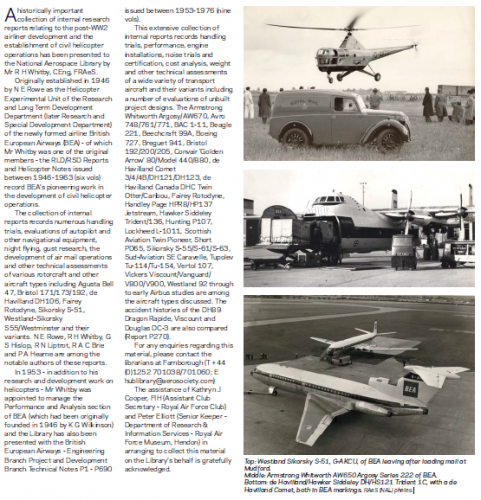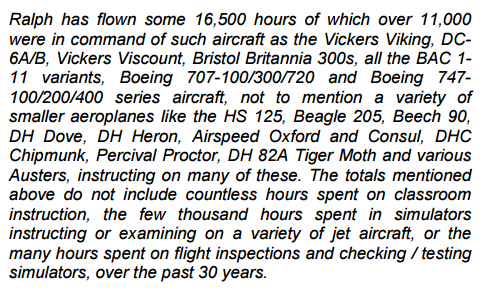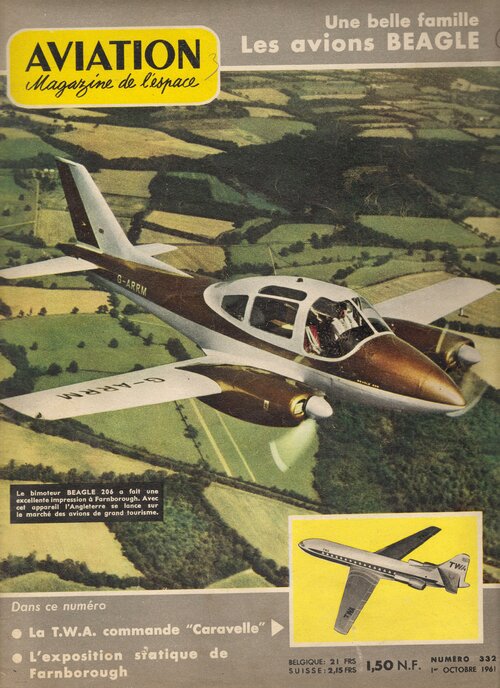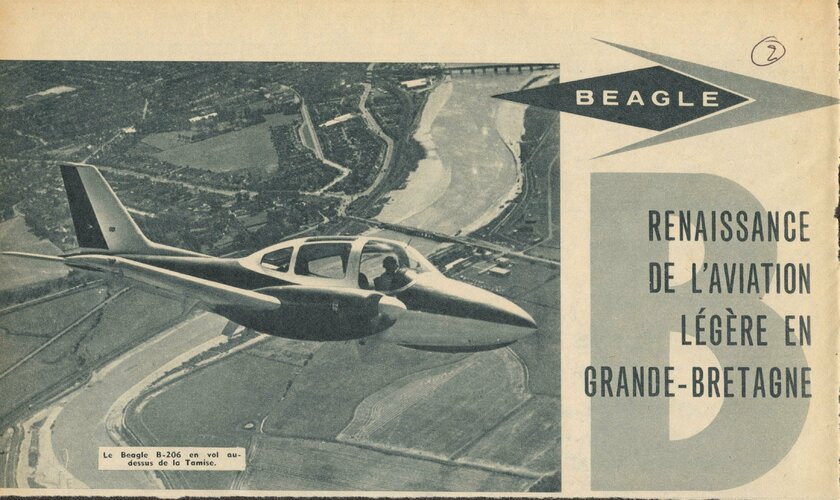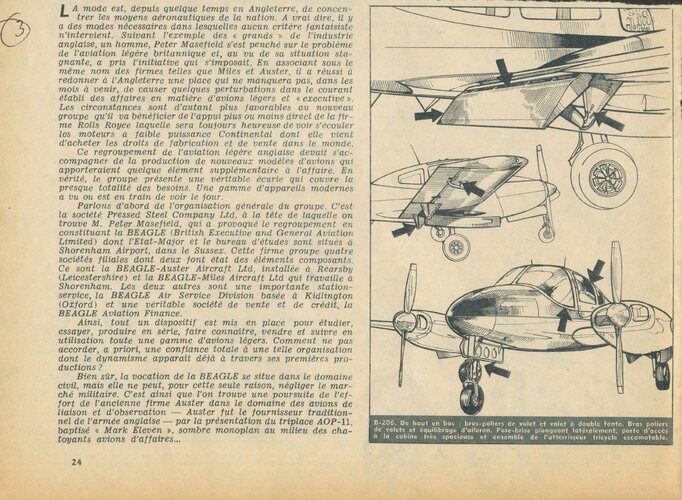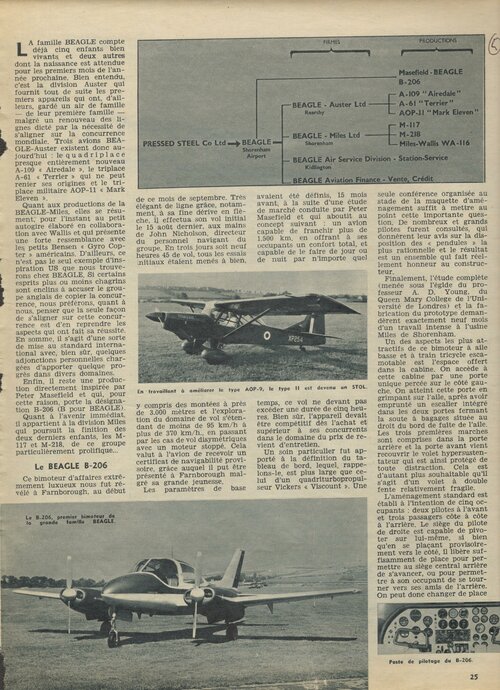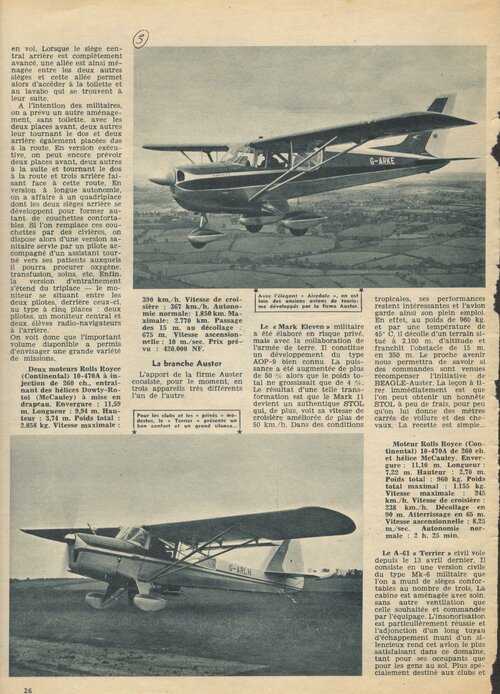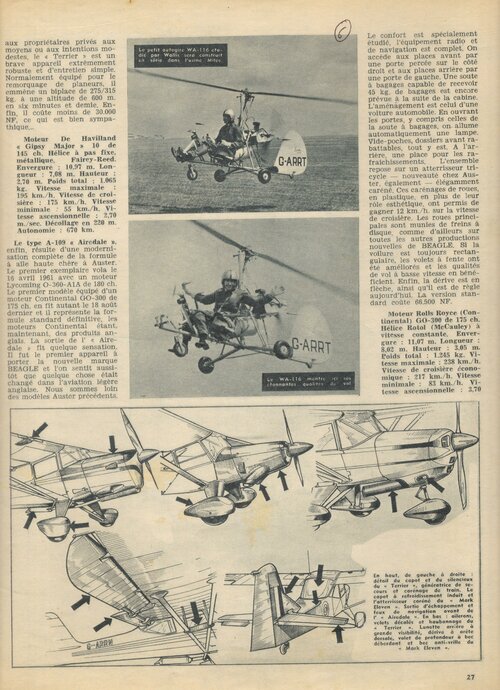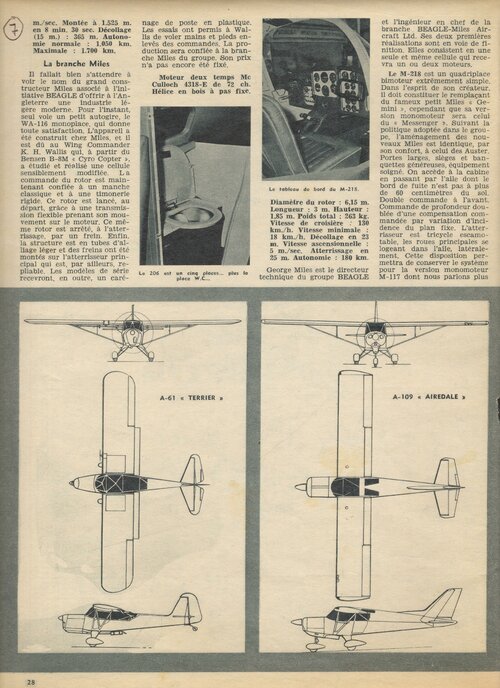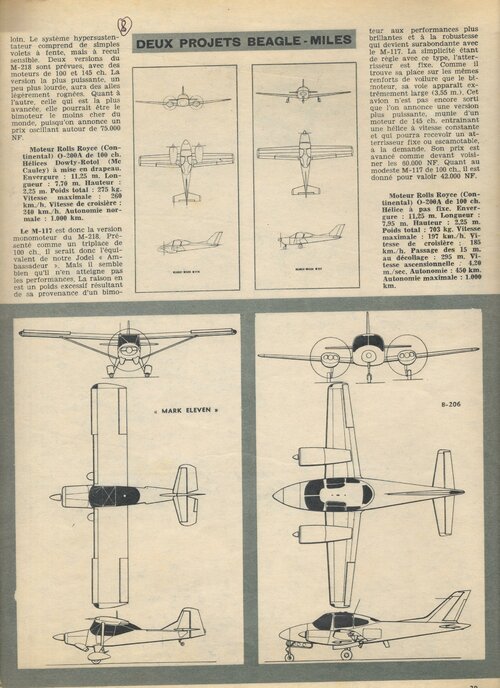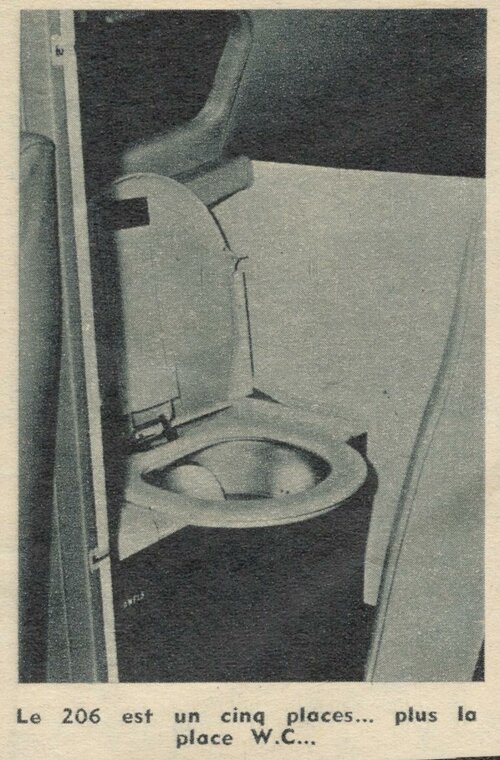- Joined
- 25 June 2009
- Messages
- 14,753
- Reaction score
- 6,147
When Beagle took over the assets from Auster and Miles, they established a numbering system that is not too easy to follow.
Prefix letters
Designations in "A.***" were for former Auster designs.
Designations in "B.***" were for off-the-shelf Beagle designs.
Designations in "M.***" were for former Miles designs.
Initially the acquired designs were called Beagle-Auster and Beagle-Miles but soon enough the original company names disappeared and only the name Beagle remained. Similarly, the "M." prefix was soon dropped and these types were prefixed "B."
Numbers
Apart from the out of sequence A.61, whose logic escapes me, all other model numbers have three digits and follow a sequential order.
However, that order is not immediately evident, as it is given by the second and third digit — the fiirst digit is only there to indicate whether the aircraft is a single- or a twin-engine type. To complicate matters further it would seem that Beagle chose also to reserve the uneven numbers for the single-engine types and the even numbers for the twin-engine ones (although the WA.116 doesn't follow this pattern).
Not all numbers seem to have been allocated. Besides the A.61 mentioned above, the earliest number in the list is "*06" (B.206).
NOTE: THE LIST BELOW IS VERY INCOMPLETE.
IT HAS NOW BEEN UPDATED IN EXCEL (.xlsx) FORM (see comment #23)
A.61 Terrier Series 1 (former Auster 6B, a civil version of the A.O.P. 6)
A.61 Terrier Series 2
B.206 (Masefield-Beagle design, soon called Beagle only)
B.206X (first prototype)
B.206Y (second prototype)
B.206Z (two pre-production examples)
B.206R Basset CC.1
B.206C = B.206 Series 1
B.206S = B.206 Series 2
B.206 Series 3
A.109 Airedale (former Auster D8)
B.210 (unbuilt enlarged derivative of B.206)
A.111 Airedale (single military modification)
A.113 Husky (former Auster D5 or D5/180)
A.115 "Mark 11" (former Auster E3 or A.O.P. 11)
WA.116 Series 1 (Beagle Miles-Wallis autogyro) (see note)
M.117 > B.117 (former Miles M.114)
M.218X > B.218X (former Miles M.115 Martlet)
B.220 (project, no detail)
B-121C (early designation)
B.121 Pup Series 1 (Pup 100)
B.121 Pup Series 2 (Pup 150)
B.121 Pup Series 3 (Pup 160)
B.222 (project, no detail)
B.123 (single-engine B.242 project)
B.125 Bulldog Series 1 (produced by Scottish Aviation as the Bulldog Series 100 and 200; eventually as British Aerospace SA-3 Bulldog)
B.242X (prototype derived from B.218X but without plastic components) (see note)
NOTES:
Prefix letters
Designations in "A.***" were for former Auster designs.
Designations in "B.***" were for off-the-shelf Beagle designs.
Designations in "M.***" were for former Miles designs.
Initially the acquired designs were called Beagle-Auster and Beagle-Miles but soon enough the original company names disappeared and only the name Beagle remained. Similarly, the "M." prefix was soon dropped and these types were prefixed "B."
Numbers
Apart from the out of sequence A.61, whose logic escapes me, all other model numbers have three digits and follow a sequential order.
However, that order is not immediately evident, as it is given by the second and third digit — the fiirst digit is only there to indicate whether the aircraft is a single- or a twin-engine type. To complicate matters further it would seem that Beagle chose also to reserve the uneven numbers for the single-engine types and the even numbers for the twin-engine ones (although the WA.116 doesn't follow this pattern).
Not all numbers seem to have been allocated. Besides the A.61 mentioned above, the earliest number in the list is "*06" (B.206).
NOTE: THE LIST BELOW IS VERY INCOMPLETE.
IT HAS NOW BEEN UPDATED IN EXCEL (.xlsx) FORM (see comment #23)
A.61 Terrier Series 1 (former Auster 6B, a civil version of the A.O.P. 6)
A.61 Terrier Series 2
B.206 (Masefield-Beagle design, soon called Beagle only)
B.206X (first prototype)
B.206Y (second prototype)
B.206Z (two pre-production examples)
B.206R Basset CC.1
B.206C = B.206 Series 1
B.206S = B.206 Series 2
B.206 Series 3
A.109 Airedale (former Auster D8)
B.210 (unbuilt enlarged derivative of B.206)
A.111 Airedale (single military modification)
A.113 Husky (former Auster D5 or D5/180)
A.115 "Mark 11" (former Auster E3 or A.O.P. 11)
WA.116 Series 1 (Beagle Miles-Wallis autogyro) (see note)
M.117 > B.117 (former Miles M.114)
M.218X > B.218X (former Miles M.115 Martlet)
B.220 (project, no detail)
B-121C (early designation)
B.121 Pup Series 1 (Pup 100)
B.121 Pup Series 2 (Pup 150)
B.121 Pup Series 3 (Pup 160)
B.222 (project, no detail)
B.123 (single-engine B.242 project)
B.125 Bulldog Series 1 (produced by Scottish Aviation as the Bulldog Series 100 and 200; eventually as British Aerospace SA-3 Bulldog)
B.242X (prototype derived from B.218X but without plastic components) (see note)
NOTES:
- A Beagle B.207 mentioned in Taschenbuch für Wehrfragen in 1963 was most certainly a typo.
- Please note that Wallis's subsequent designs, with no Beagle involvement, continued their own sequence as WA-117 to WA-121.
- Please note out-of-sequence number of B.242.
Last edited:

